The Central Intelligence Agency needs the best of the best to serve the agency, people who are well-educated, talented and discreet. Or as one recruiter put it:
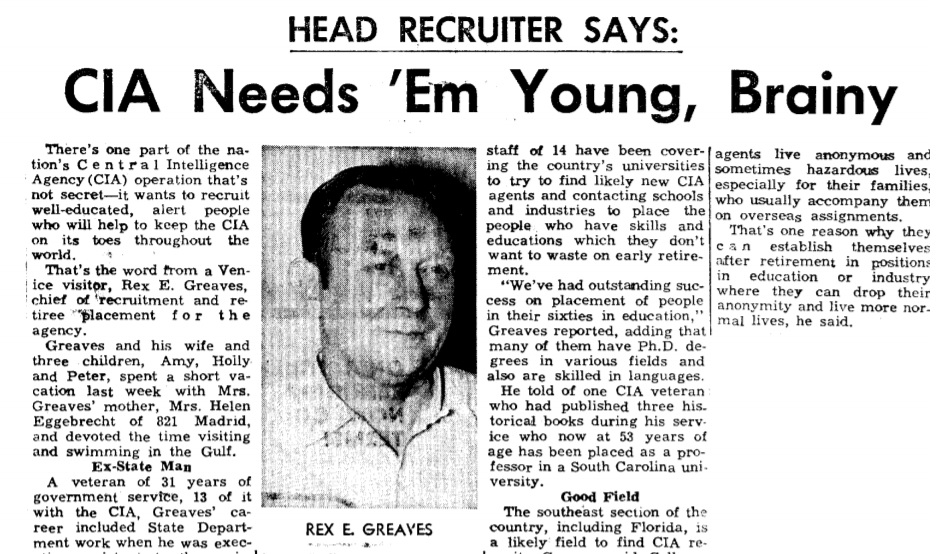
Where better to find new members than colleges and universities?
While the CIA had recruited students before on a smaller scale, they launched a more aggressive recruitment plan, the “100 Colleges/Universities Program,” in 1963 to find and enlist potential candidates.
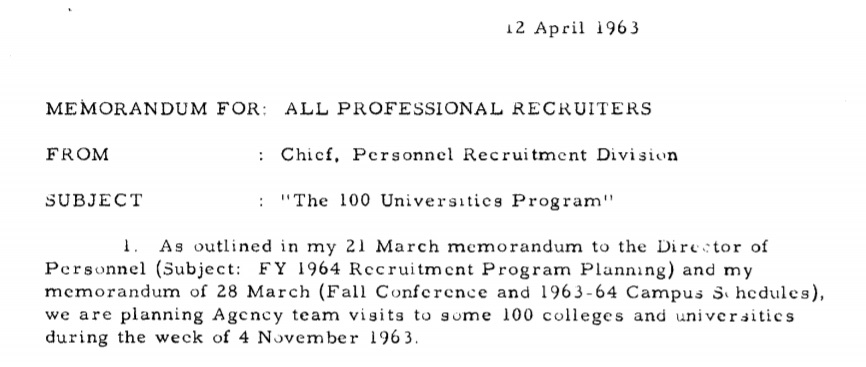
A 1965 memo noted that they were still having difficulty finding enough people, so the agency considered advertising more, but only “as a last resort.”
These recruitment efforts received very little public attention until a 1966 protest against CIA recruitment at Grinnell College, consisting of only nine picketers, garnered media coverage. Thanks to that, the CIA got the advertising they needed to find more candidates, but it came at a price: a growing number of student protests over the next few decades.
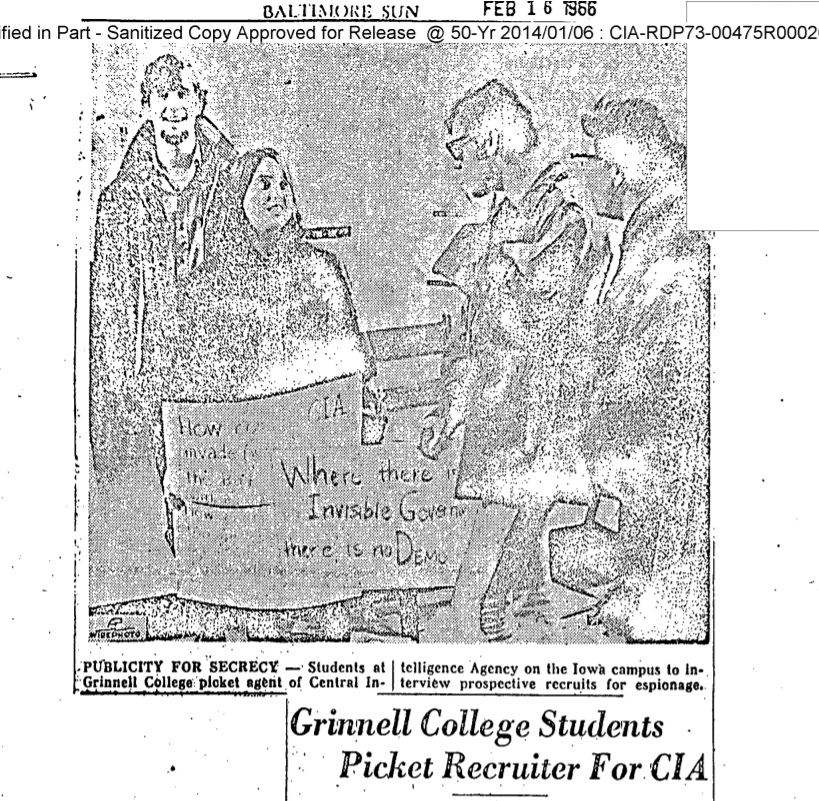
Here are some of the most notable antics from CIA recruitment protesters over the years:
- When CIA recruiter Linda Iacelli visited Ohio State University in January 1979, she was greeted by more than chants and signs when protesters splashed red paint on her to symbolize the “blood of people around the world.” The paint “covered [Iacelli’s] back and splashed on the walls, floors, papers, desks and several bystanders.”
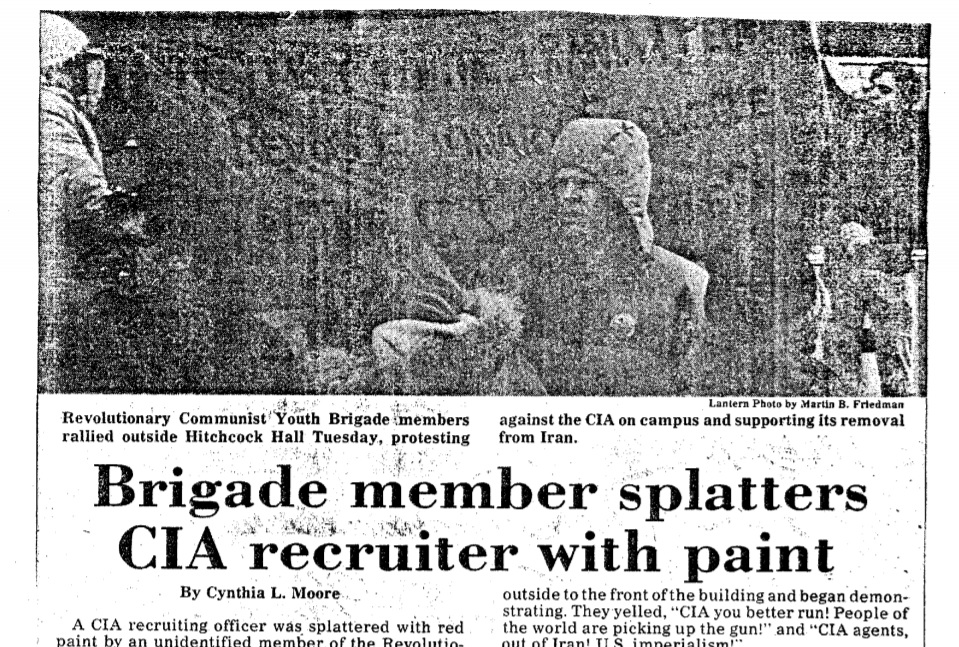
- In response to protests of recruiters visiting the University of Michigan in November 1981, members of the Sigma Chi fraternity climbed onto the roof of their house and counter-protested by played the national anthem so loudly that many students attending classes across the street could not hear their professors.
-
Protesters at the University of Wisconsin-Madison carried around a cardboard “roach motel” in November 1983, which served as a symbol for those recruited by the CIA. “They check in and never check out,” one protester said.
-
Supposedly, in November 1984, protesters at the University of Michigan disrupted a presentation by recruiters and chased them out to their cars.
- Over 170 protesters were arrested during protests at the University of Colorado in 1985. Long story short: “Each protester spoke briefly into a microphone. Protesters walked toward the police in small groups, their arms linked. Police told them to stop. They took another step and were arrested.” This dance continued throughout the day and protesters “sang and waved to bystanders” as they were bussed away.

- Twice, protesters were maced: Once in April 1985 at the University of Wisconsin-Madison when protesters attempted to storm campus police in an effort to place the recruiter under “citizen’s arrest” and the other at the University of Colorado-Boulder in November 1986, where police used “mace and clubs to try to control the protesters.”
- Speaking of citizen’s arrest, 1985 seemed to be a popular year for other protesters to try this tactic. Protesters at the University of Colorado made two attempts, one in April (during the 170+ arrests protest) and the other in November, during both of which protesters were arrested instead. Attempts by protesters at Cornell University in March and Grinnell College in April were also met by arrests. Williams College protesters tried in March but “[the recruiter] walked away without talking to them and the group disbanded peacefully when it began to hail.”
And while not directly related to campus recruitment, here’s another interesting CIA protest - during a presentation on national security by then-CIA Director William Casey in October 1981, 13 students at Brown University interrupted by reading Lewis Carroll’s poem “Jabberwocky” for three minutes, earning them the nickname “Jabberwocky 13.”
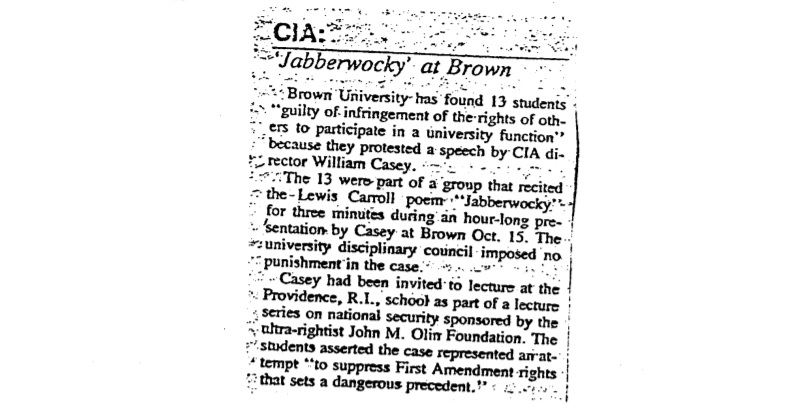
Facing charges for violating Casey’s “free speech,” which could lead to their expulsion, the protesters denied the allegations at their hearing (“If we really wanted to disrupt Mr. Casey’s speech, we would have recited ‘Paradise Lost,’” one protester said.) Charges against the protesters were dropped.
(As an ironic aside: In 1984, the CIA said that students “welcome them” and they faced fewer protests than ever!)
You can read the Anti-CIA Organizing Manual that so irritated the Agency embedded below.
Image via CIA




